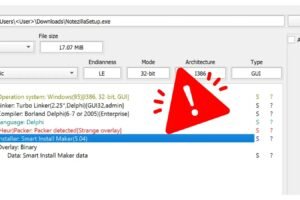
Simplifying Threat Intelligence: The Contribution of STIX and TAXII in Facilitating Cyber Threat Sharing
STIX (Structured Threat Information eXpression) and TAXII (Trusted Automated Exchange of Indicator Information) have been developed to elevate the detection, analysis, and sharing of cyber threat intelligence.
STIX Overview:
STIX serves as a language for standardizing the representation of cyber threat information. It enables diverse organizations and individuals to convey intricate information consistently and structuredly, fostering efficient communication, processing, and automation. STIX comprises several key components:
- Indicators: Describing patterns of suspicious or malicious activity.
- Observables: Specific pieces of information or data points like IP addresses or file hashes.
- Incidents: Representing specific instances of security events.
- TTPs (Tactics, Techniques, and Procedures): Describing the behavior and modus operandi of threats.
- Campaigns: Representing sets of related malicious activities or incidents.
- Threat Actors: Information about groups or individuals involved in malicious activity.
- Exploit Targets: Details about vulnerabilities or weaknesses being targeted.
TAXII Overview:
TAXII functions as a protocol for exchanging cyber threat information represented in STIX. It facilitates secure and automated communication and sharing of threat intelligence across various organizations and systems. TAXII defines essential services supporting the exchange of threat intelligence information:
- Collection Management Service: Manages collections of STIX content available to TAXII clients.
- Inbox Service: Receives STIX content submitted by TAXII clients.
- Discovery Service: Allows TAXII clients to locate services provided by a TAXII server.
- Poll Service: Enables clients to request STIX content from a server.
Development and Evolution:
Initially developed by MITRE Corporation and sponsored by the United States Department of Homeland Security, STIX and TAXII were later transitioned to OASIS (Organization for the Advancement of Structured Information Standards) in 2015. OASIS, a non-profit consortium, facilitates broader international participation in their ongoing development and evolution.
Main Purpose of STIX and TAXII:
STIX and TAXII facilitate the exchange of threat intelligence among entities, such as cybersecurity vendors, organizations, and government agencies. The standardization and automation provided by these technologies enable faster and more efficient identification, analysis, and mitigation of cyber threats.
Implications Without STIX and TAXII:
Lack of uniformity, inefficient communication, limited automation, decreased collaboration, impaired threat detection and response, reduced situational awareness, and higher costs are potential challenges without STIX and TAXII.
Applications Across Cybersecurity Domains:
STIX and TAXII find applications in Threat Intelligence Platforms (TIPs), Information Sharing and Analysis Centers (ISACs), Vulnerability Management, Security Policy Enforcement, Endpoint Detection and Response (EDR), Incident Management, Digital Forensics and Incident Response (DFIR), Fraud Prevention, Security Research and Analysis, Cyber Threat Hunting, Regulatory Compliance, Risk Management, Education and Training, Supply Chain Security, and Integration with SIEM and SOAR solutions.
In essence, STIX and TAXII play a pivotal role in structuring and sharing cyber threat intelligence, contributing to the resilience of the cybersecurity ecosystem. They stand as open standards and protocols, providing a foundation for standardized and automated threat intelligence exchange. While they are not subscription services, organizations can subscribe to threat intelligence feeds utilizing STIX and TAXII for distribution.



